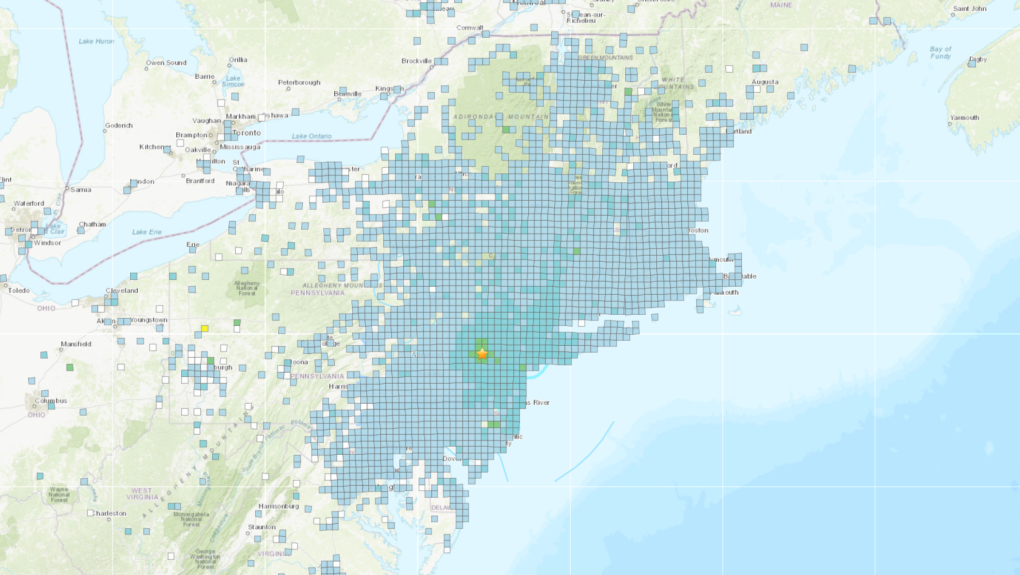As an earthquake shook New York City on Friday morning, some Ontario residents felt rumblings.
Around 10:25 a.m., Harsim Randhawa was on the seventh floor of an office building in Waterloo, Ont. “I felt the building vibrate,” he said.
It was a small shake, but he felt it, and messaged others to spread the news. “They said people are probably moving stuff somewhere in the building,”Randhawa said.
Ten minutes later, news broke of an earthquake in New York, with a preliminary magnitude of 4.8 at its centre.
It wasn’t just Randhawa who felt the rumble. Hundreds of submissions poured into the United States Geological Survey’s (USGC) “Did you feel it?” map, which pools community data based on where people noticed the earthquake. In Canada, reports were filed in Toronto, Niagara, Hamilton, Kitchener, Belleville, Ottawa and Montreal.
Michal Kolaj, a seismologist with Natural Resources Canada, said it’s “certainly possible” people in Toronto felt the quake. “It would have been [a] very weak shaking,” he added.
Kolaj explained earthquakes in eastern North America travel farther distances than in the west.
 The United States Geological Survey’s (USGC) “Did you feel it?” map, which pools community data based on where people noticed the earthquake, on April 5, 2024.
The United States Geological Survey’s (USGC) “Did you feel it?” map, which pools community data based on where people noticed the earthquake, on April 5, 2024.
That’s a result of the geology in eastern North America, which is older, denser and has had more time to heal, allowing seismic waves to travel further distances. In the west, where the bedrock is younger and more fractured, it absorbs more of the seismic energy.
According to USGC, eastern earthquakes are more of a mystery than in the west, because they don’t take place at a plate boundary. In contrast, eastern Canada is part of the stable interior of the North American Plate.
With the earthquake mere hours in the past, Kolaj said there’s still a possibility of aftershocks, but added that they would be smaller, and even less likely to be felt north of the border.